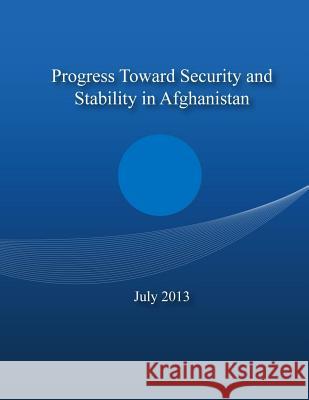Progress Toward Security and Stability in Afghanistan » książka
Progress Toward Security and Stability in Afghanistan
ISBN-13: 9781502764669 / Angielski / Miękka / 2014 / 190 str.
The conflict in Afghanistan has shifted into a fundamentally new phase. For the past 11 years, the United States and our coalition partners have led the fight against the Taliban, but now Afghan forces are conducting almost all combat operations. The progress made by the International Security Assistance Force (ISAF)-led surge over the past three years has put the Government of the Islamic Republic of Afghanistan (GIRoA) firmly in control of all of Afghanistan's major cities and 34 provincial capitals and driven the insurgency into the countryside. ISAF's primary focus has largely transitioned from directly fighting the insurgency to training, advising and assisting the Afghan National Security Forces (ANSF) in their efforts to hold and build upon these gains, enabling a U.S. force reduction of roughly 34,000 personnel- half the current force in Afghanistan-by February 2014. As agreed by President Obama and President Karzai at their January 2013 meeting in Washington, D.C., and in line with commitments made at the Lisbon and Chicago NATO summits, "Milestone 2013" was announced on June 18, 2013, marking ISAF's official transition to its new role. The ANSF has grown to approximately 96 percent of its authorized end-strength of 352,000 personnel and is conducting almost all operations independently. As a result, ISAF casualties are lower than they have been since 2008. The majority of ISAF bases has been transferred to the ANSF or closed (although most large ISAF bases remain), and construction of most ANSF bases is complete. Afghanistan's populated areas are increasingly secure; the ANSF has successfully maintained security gains in areas that have transitioned to Afghan lead responsibility. To contend with the continuing Taliban threat, particularly in rural areas, the ANSF will require training and key combat support from ISAF, including in extremis close air support, through the end of 2014. Challenges with the economy and governance will continue to foster uncertainty about the longterm prospects for stability. Afghanistan has made some progress over the past decade, as reflected in the recently released United Nations Development Programme Human Development Index, which cited Afghanistan as making the largest percentage gain in the world over the last 10 years. Moreover, the economy grew 12 percent in 2012, and the Afghan government is increasingly able to execute parts of its budget and deliver very basic goods and services. Nonetheless, Afghanistan remains one of the poorest countries in the world and will remain heavily dependent on outside aid. The government has yet to reduce corruption or extend governance to many rural areas effectively. Given the expected decline in international assistance, Afghanistan will need to embrace new sources of future economic growth and government revenue.











